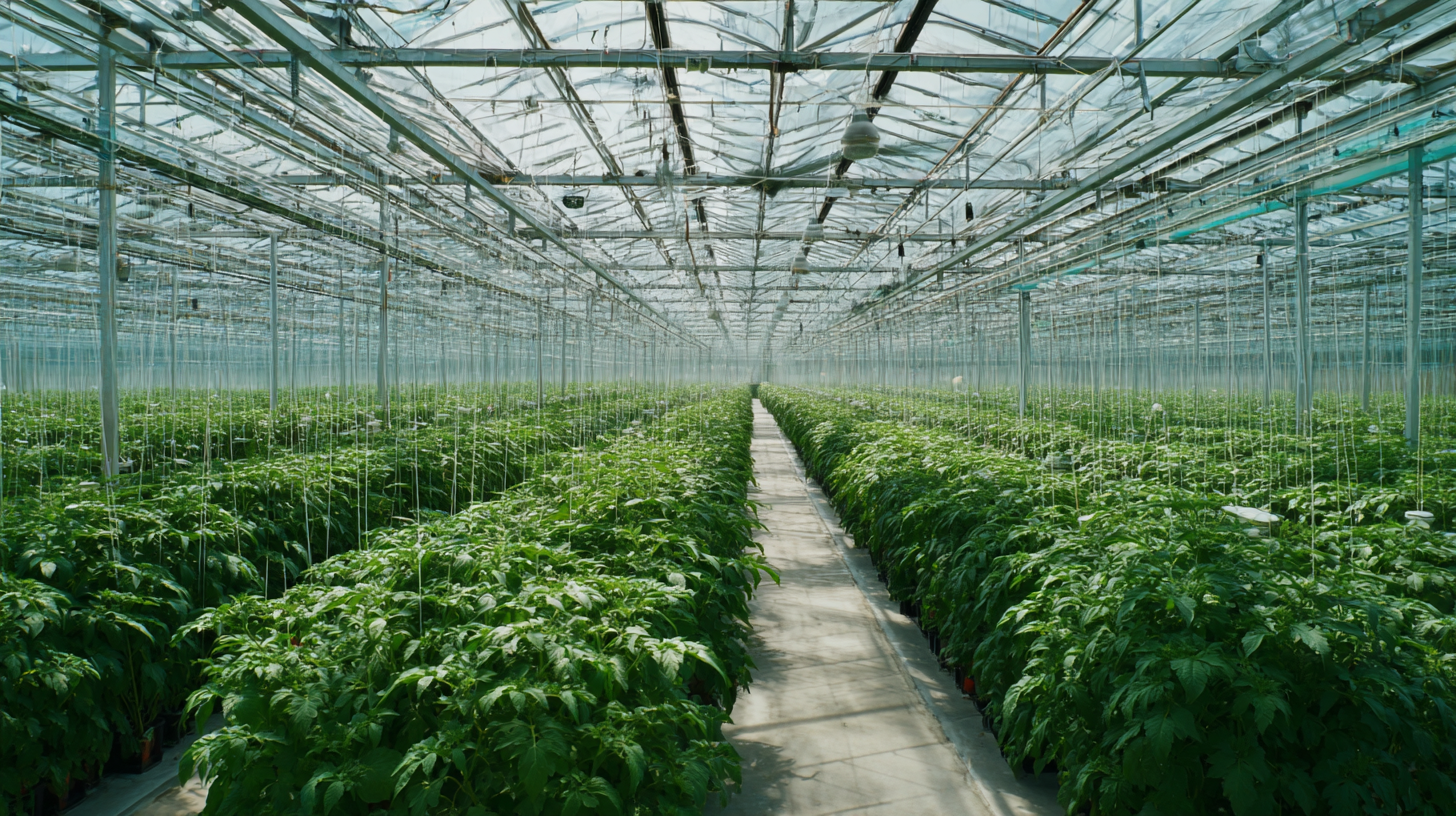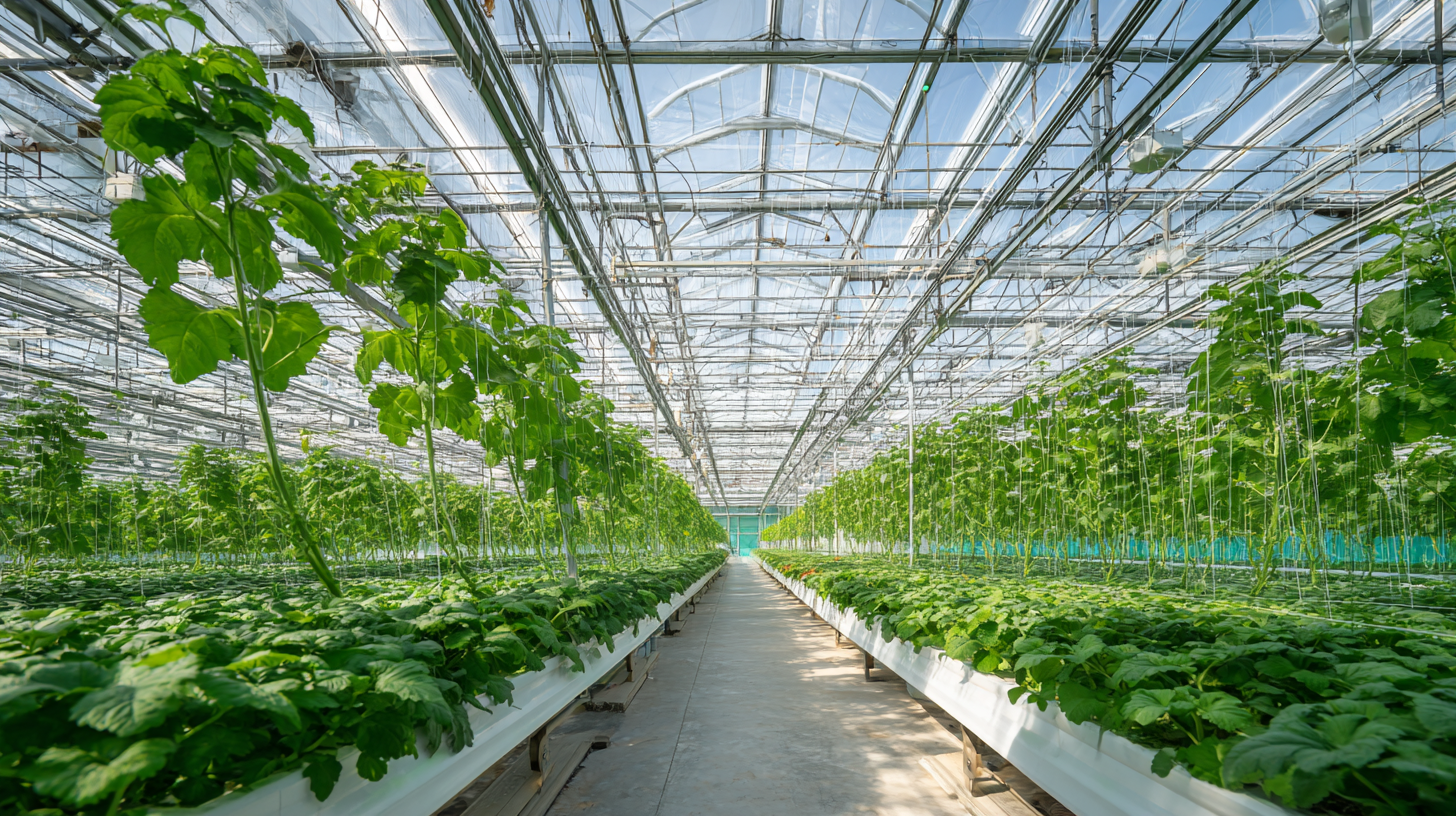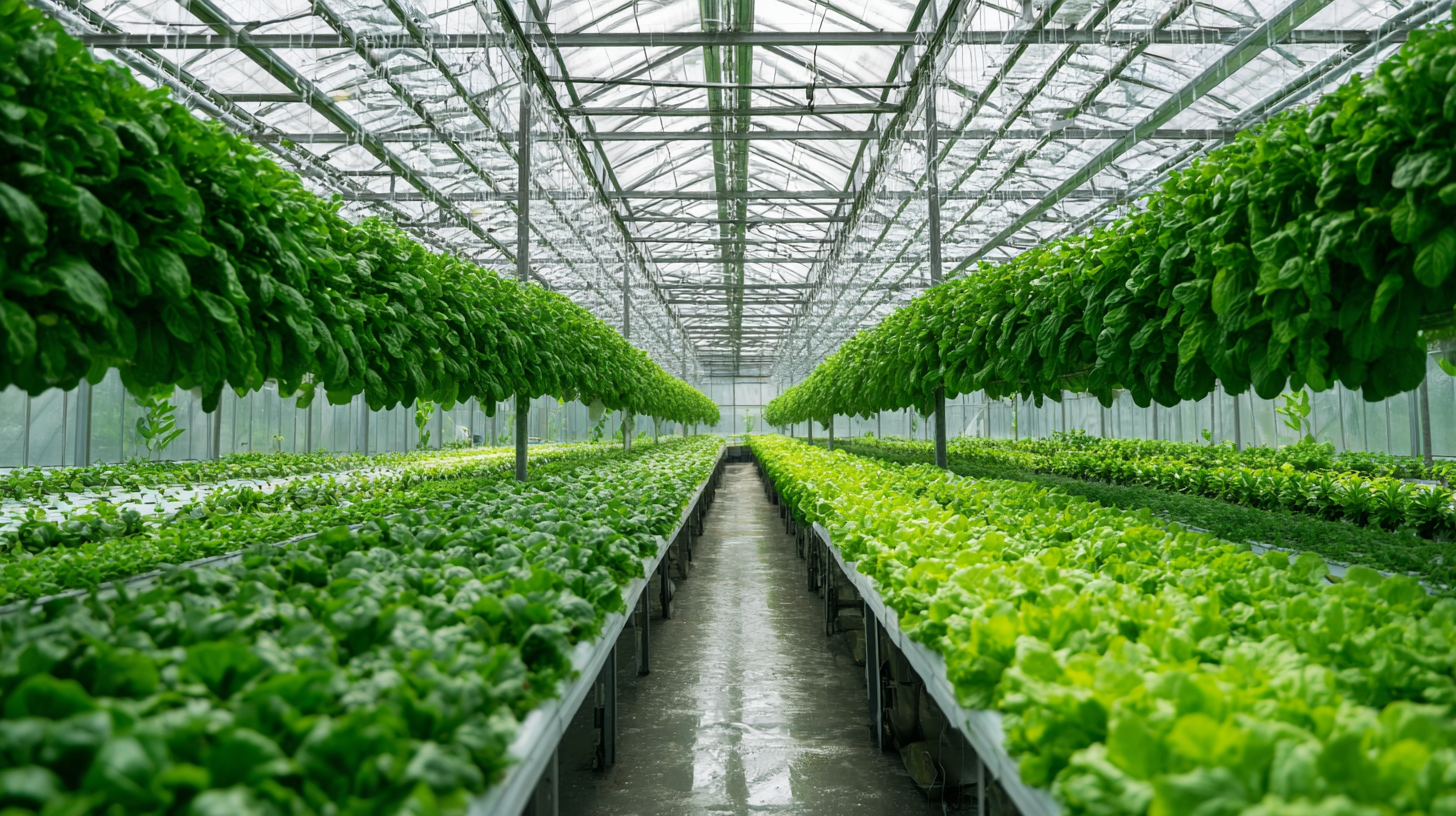
Unleashing Global Excellence with China's Finest Vegetable Greenhouses
In recent years, the global demand for fresh vegetables has skyrocketed, driven by an increasing population and a growing consumer focus on health and sustainability. According to a report by Markets and Markets, the global greenhouse market is expected to reach $43.6 billion by 2025, with vegetable greenhouses playing a pivotal role in this growth.
 China, as a leading producer, has harnessed cutting-edge technology and innovative farming practices to cultivate high-quality vegetables year-round. These vegetable greenhouses not only optimize space and resources but also ensure consistent supply and minimize environmental impact. As the agricultural landscape transforms, understanding the nuances of China’s vegetable greenhouse sector becomes essential for businesses and stakeholders looking to tap into global excellence in food production. This ultimate guide will explore the best practices, technological advancements, and the future prospects of vegetable greenhouses in unleashing superior agricultural capabilities on a global scale.
China, as a leading producer, has harnessed cutting-edge technology and innovative farming practices to cultivate high-quality vegetables year-round. These vegetable greenhouses not only optimize space and resources but also ensure consistent supply and minimize environmental impact. As the agricultural landscape transforms, understanding the nuances of China’s vegetable greenhouse sector becomes essential for businesses and stakeholders looking to tap into global excellence in food production. This ultimate guide will explore the best practices, technological advancements, and the future prospects of vegetable greenhouses in unleashing superior agricultural capabilities on a global scale.
Comparative Analysis of Chinese Vegetable Greenhouses: A Global Perspective
 China’s vegetable greenhouses have become a focal point in the global agricultural landscape, particularly when viewed through the lens of environmental sustainability and food security. The rise of greenhouse technology in China not only enhances vegetable production but also mitigates food waste—a pressing issue derived from dietary preferences that significantly impacts households. Insights reveal that excess food waste creates challenges not only for local economies but also for global food security. As China leads in the adoption of advanced greenhouse methods, the country is positioned to address these challenges through efficient resource management and reduced greenhouse gas emissions.
China’s vegetable greenhouses have become a focal point in the global agricultural landscape, particularly when viewed through the lens of environmental sustainability and food security. The rise of greenhouse technology in China not only enhances vegetable production but also mitigates food waste—a pressing issue derived from dietary preferences that significantly impacts households. Insights reveal that excess food waste creates challenges not only for local economies but also for global food security. As China leads in the adoption of advanced greenhouse methods, the country is positioned to address these challenges through efficient resource management and reduced greenhouse gas emissions.
The comparative analysis of Chinese vegetable greenhouses against the backdrop of global practices highlights the importance of eco-efficiency in agriculture. Innovative approaches being developed in China, such as the integration of greenhouse gas emissions assessments, provide a critical framework for evaluating agricultural sustainability. This not only cultivates an understanding of environmental impacts but also underscores the role of diverse and nutritious crops, like green leafy vegetables, in reshaping dietary patterns. As China continues to innovate within this sector, the potential for its greenhouse technology to set standards for global agricultural practices becomes increasingly evident, showcasing a commitment to both high-quality produce and sustainable farming practices.
Innovative Technologies in China's Greenhouses vs. Traditional Methods
The global agricultural landscape is witnessing a paradigm shift as innovative technologies in China's vegetable greenhouses increasingly outperform traditional cultivation methods. According to a report from the China Agricultural University, greenhouses equipped with advanced hydroponic and aeroponic systems can yield up to 30% more produce compared to conventional soil-based techniques. This is particularly significant in urban areas where space and resources are limited.
Furthermore, the integration of smart farming technologies, such as IoT sensors for climate control and automated irrigation systems, significantly enhances productivity and resource efficiency. A study published by the International Journal of Agricultural Science indicated that these modern greenhouses use up to 50% less water than traditional farms while producing higher quality vegetables. As the demand for fresh produce rises globally, China's innovative greenhouse solutions are not only enhancing domestic food security but are also setting new standards for excellence in agriculture on the world stage.
Cost-Efficiency of China's Vegetable Greenhouses Compared to Global Standards
China's vegetable greenhouses have become a benchmark for cost-efficiency in the global agricultural market. According to a report by the Food and Agriculture Organization (FAO), the average cost per square meter for greenhouse vegetable cultivation in China is approximately 30-40% lower than that in Europe and North America. This divergence is primarily due to lower labor costs, economies of scale, and significant government support aimed at enhancing agricultural productivity. These factors enable Chinese growers to maintain competitive pricing while producing high-quality vegetables.

Moreover, the rapid adoption of innovative technologies, such as hydroponics and automated climate control systems, has further streamlined operations in Chinese greenhouses. A study by the Research Institute of Agriculture Technology indicates that these advancements can increase yield by up to 25% and reduce water usage by 50% compared to traditional farming methods. As global demands for sustainable and efficient agricultural practices rise, China's vegetable greenhouses have positioned themselves as leaders by combining cost-effectiveness with technological innovation, proving to be valuable assets in the quest for global food security.
Sustainability Practices in Chinese Greenhouses: A Benchmark for Others
China has emerged as a leader in sustainable agricultural practices, particularly through its innovative vegetable greenhouses. These facilities not only maximize crop yield but are also meticulously designed to minimize environmental impact. Employing cutting-edge technologies such as hydroponics and solar energy, these greenhouses reduce water consumption and reliance on harmful pesticides, setting a benchmark for sustainable farming worldwide.
In addition to their advanced design, Chinese greenhouses emphasize energy efficiency and waste recycling. Many facilities utilize rainwater harvesting systems and composting methods to create a closed-loop ecosystem that supports plant growth while enriching the earth. This holistic approach not only fulfills local food demands but also showcases how sustainability can be intertwined with agriculture, offering valuable lessons for countries striving to enhance their own farming practices.
As the world faces pressing climate challenges, the sustainability practices found in China’s vegetable greenhouses serve as a model for global agricultural strategies. By integrating technology, eco-friendly materials, and innovative methodologies, these greenhouses are leading the way toward a more sustainable and resilient food system.
Unleashing Global Excellence with China's Finest Vegetable Greenhouses
This chart highlights the sustainability practices in Chinese vegetable greenhouses, comparing energy consumption, water usage, and crop yield across different types of greenhouses.
Market Impact of Chinese Greenhouses on Global Vegetable Production Trends
The rise of China's greenhouse technology is reshaping the global vegetable production landscape, with significant implications for market trends. As Chinese vegetable greenhouses become more sophisticated, they are enabling farmers to achieve higher yields and maintain quality throughout the year, thereby influencing the supply chain dynamics worldwide. These advancements not only support local farmers in China but also impact vegetable producers in other countries, triggering shifts in production practices and market strategies.
Furthermore, the competitive prices of Chinese greenhouse products are pressing farmers globally to adapt their business models and invest in new technologies to remain viable. The increased efficiency of greenhouse production in China serves as a blueprint for sustainable agricultural practices, reducing reliance on harmful fertilizers while maximizing output. However, the rapid adoption of these practices comes with challenges, particularly for smaller or less technologically equipped farmers who struggle to compete. In a world grappling with climate change and fluctuating markets, the innovations stemming from China's greenhouse sector highlight a critical juncture in the future of global vegetable production.
| Region | Vegetable Types | Production Volume (Million Tons) | Growth Rate (%) | Greenhouse Area (Hectares) | Market Share (%) |
|---|---|---|---|---|---|
| North America | Tomatoes | 3.5 | 5.0 | 15,000 | 20 |
| Europe | Cucumbers | 2.8 | 4.5 | 12,000 | 15 |
| Asia | Bell Peppers | 4.0 | 6.5 | 25,000 | 30 |
| Africa | Lettuce | 1.2 | 3.0 | 8,000 | 10 |
| South America | Spinach | 1.5 | 7.0 | 5,000 | 8 |
